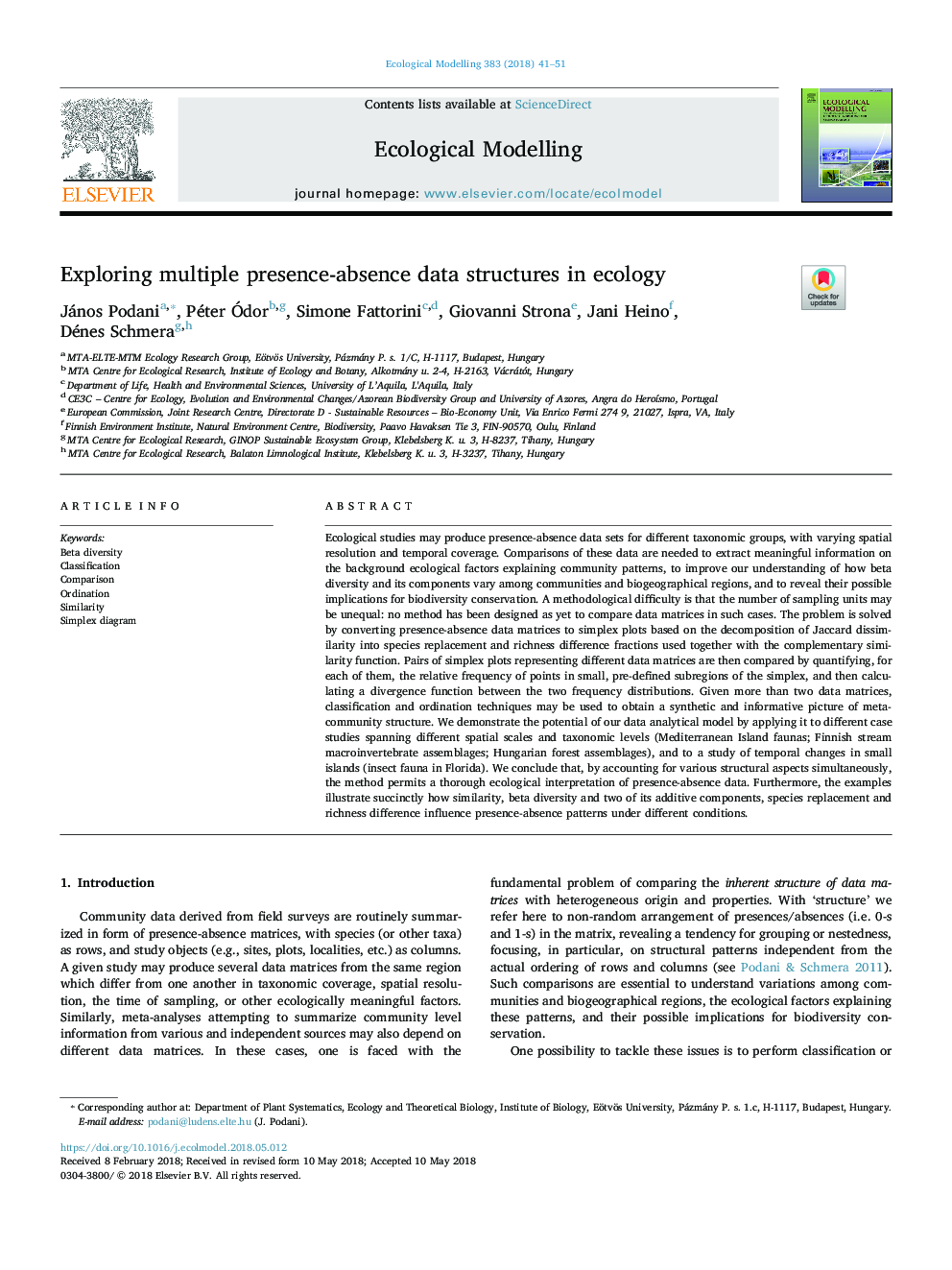| Article ID | Journal | Published Year | Pages | File Type |
|---|---|---|---|---|
| 8845995 | Ecological Modelling | 2018 | 11 Pages |
Abstract
Ecological studies may produce presence-absence data sets for different taxonomic groups, with varying spatial resolution and temporal coverage. Comparisons of these data are needed to extract meaningful information on the background ecological factors explaining community patterns, to improve our understanding of how beta diversity and its components vary among communities and biogeographical regions, and to reveal their possible implications for biodiversity conservation. A methodological difficulty is that the number of sampling units may be unequal: no method has been designed as yet to compare data matrices in such cases. The problem is solved by converting presence-absence data matrices to simplex plots based on the decomposition of Jaccard dissimilarity into species replacement and richness difference fractions used together with the complementary similarity function. Pairs of simplex plots representing different data matrices are then compared by quantifying, for each of them, the relative frequency of points in small, pre-defined subregions of the simplex, and then calculating a divergence function between the two frequency distributions. Given more than two data matrices, classification and ordination techniques may be used to obtain a synthetic and informative picture of metacommunity structure. We demonstrate the potential of our data analytical model by applying it to different case studies spanning different spatial scales and taxonomic levels (Mediterranean Island faunas; Finnish stream macroinvertebrate assemblages; Hungarian forest assemblages), and to a study of temporal changes in small islands (insect fauna in Florida). We conclude that, by accounting for various structural aspects simultaneously, the method permits a thorough ecological interpretation of presence-absence data. Furthermore, the examples illustrate succinctly how similarity, beta diversity and two of its additive components, species replacement and richness difference influence presence-absence patterns under different conditions.
Related Topics
Life Sciences
Agricultural and Biological Sciences
Ecology, Evolution, Behavior and Systematics
Authors
János Podani, Péter Ãdor, Simone Fattorini, Giovanni Strona, Jani Heino, Dénes Schmera,
